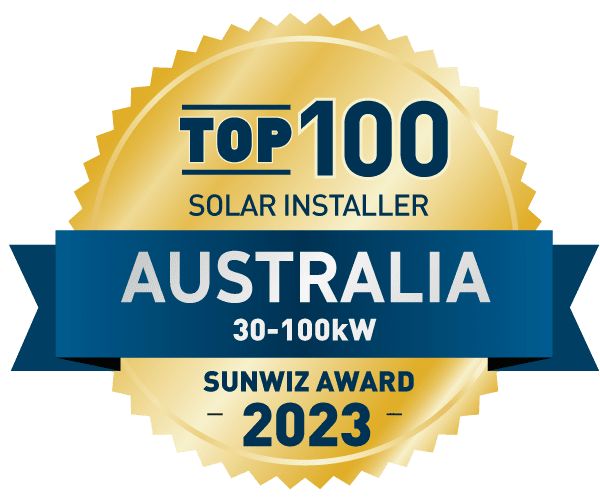It seems like there are so many options when it comes to heating and cooling that it can often be hard to know which is right for you and your family.
Heating and cooling systems can account for 20-50% of energy used in the average Australian household. This will vary depending on the climate and whether you need more heating or more cooling. Making changes to the thermal performance of your home can also affect this.
What options are available?
Electrical
Ducted Reverse Cycle Air-Conditioners
Ducted reverse cycle air-conditioners work as both a heating and cooling solution. The system works by absorbing the heat from the outside air when in heating mode, and removing the heat from the inside air while in cooling mode.
These systems consist of a central unit, typically concealed in a roof cavity or another discrete location, which houses the compressor and evaporator coil. Extensive networks of ducts span throughout the building, delivering conditioned air to various rooms or zones. The beauty of ducted systems lies in their ability to provide consistent comfort throughout the entire structure, with the added benefit of zoning capabilities. This means you can customise temperatures in different areas, catering to individual preferences and optimising energy efficiency.
These are the most energy-efficient systems and can take one unit of electrical energy and turn it into 3-6 times as much heating and cooling energy. Even lower rated units have significantly less impact on the environment by generating less greenhouse gas emissions, and are cheaper to run than other heating and cooling systems.
Split System Air Conditioners
Split system air conditioners are a popular and versatile cooling and heating solution for homes. Comprising of an indoor and outdoor unit, they efficiently regulate indoor temperatures by cooling and dehumidifying the air in summer and providing warmth in winter. These systems are prized for their energy efficiency, quiet operation, and ease of installation.
The indoor unit, often wall-mounted, blends seamlessly with room decor, while the outdoor unit houses the compressor and condenser coil. Split systems allow for zoned cooling, enabling users to control the climate in specific areas, making them a convenient and cost-effective choice for personalised comfort.
Split system air conditioners are renowned for their energy efficiency compared to other types of cooling and heating systems. They achieve this through inverter technology, enabling variable compressor speeds that adapt to the required temperature, minimising energy consumption. Their zoning capability allows precise control over which areas are conditioned, preventing the unnecessary cooling or heating of the entire space. Additionally, the indoor units’ quieter operation reduces the temptation to open windows or doors for fresh air, further conserving energy. Incorporating energy-efficient components and regular maintenance ensures these systems operate at their peak efficiency, making them a smart choice for cost-effective and environmentally friendly climate control.




Portable Options
Portable Panel and Oil Heaters: Portable panel heaters are electric units that provide localised heating, ideal for quickly warming up smaller areas. Oil heaters, on the other hand, use heated oil to radiate warmth, offering a reliable heat source with the flexibility to move them where needed.
Portable Air Conditioners: Portable air conditioners are versatile cooling units that can be easily moved to different rooms. They’re perfect for cooling indoor spaces and offer flexibility in managing temperatures, making them a convenient solution for hot weather.
Fans: Fans are simple yet effective devices for cooling indoor spaces. By circulating air, they provide relief from heat and help distribute cool air more evenly. Fans are an affordable and accessible option for maintaining a comfortable temperature, especially when used in combination with other cooling methods.
These options offer convenient and quick solutions, however, they lack when it comes to energy efficiency – and in turn, lack when it comes to running-cost efficiency. To enhance the energy efficiency of these options, it’s important to consider factors like proper maintenance, insulation, and using them in conjunction with energy-saving practices, such as setting thermostats at optimal levels and improving home insulation.
Gas
Not only do gas options contribute heavily to greenhouse gas emissions, but prices are also on the rise. You also need to consider associated electricity costs used to run fans and other electrical components in many gas systems.
It is also important to note that Victoria has recently announced that gas connections to new homes will be banned from the 1st of January 2024. The New South Wales government has also indicated that they will soon follow suit.
Gas Ducted Heating and Cooling
Gas ducted heating systems are prevalent in Australia for home heating. They use natural gas to heat air in a central unit and distribute it through ducts to various rooms in the house. GDH systems can be combined with ducted evaporative cooling or refrigerated cooling for a complete climate control solution.
Ducted gas heating can be paired with a ducted evaporative cooler for year-round temperature control, although a reverse-cycle air conditioning system may be more practical.


Flued Gas Heaters
The distinguishing feature of flued gas heaters is their flue or venting system. This system consists of a pipe or duct that connects the heater to the outdoors. It serves two primary purposes:
Exhaust Ventilation: The flue expels combustion byproducts and gases produced during the burning of natural gas or propane, preventing them from accumulating inside the building.
Air Supply: In many cases, flued heaters also draw in fresh outdoor air through the flue to support combustion.
Our Recommendation
To gain energy efficiency and lower your carbon footprint upgrading to a ducted or split-system reverse cycle air-conditioner is the best option.
New South Wales, Victoria, and South Australia all offer financial incentives and rebates for these upgrades. The discount or rebate you receive will vary and the final price will depend on several factors including your current system and location.
Ecovantage has a trusted network of heating and cooling providers that expands across multiple states. For assistance finding the perfect solution for you visit our heating and cooling page or get in touch!

 Victoria
Victoria




